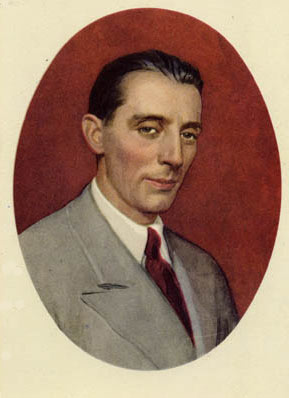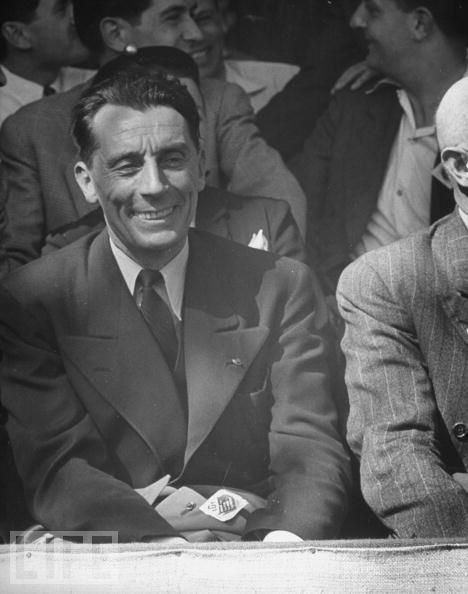<Back to Index>
- Physicist Jean Frédéric Joliot-Curie, 1900
- Painter Charles Marion Russell, 1864
- Peru's Revolutionary Túpac Amaru II, 1742


Jean Frédéric Joliot-Curie (19 March 1900 – 14 August 1958) was a French physicist and Nobel laureate.
Born in Paris, France, he was a graduate of the School of Chemistry and Physics of the city of Paris. In 1925 he became an assistant to Marie Curie, at the Radium Institute. He fell in love with Irène Curie, and soon after their marriage in 1926 they both changed their surnames to Joliot-Curie. At the insistence of Marie, Joliot-Curie obtained a second baccalauréat, a bachelor's degree, and a doctorate in science, doing his thesis on the electrochemistry of radio-elements.
While a lecturer at the Paris Faculty of Science, he collaborated with his wife on research on the structure of the atom, in particular on the projection of nuclei, which was an essential step in the discovery of the neutron. In 1935 they were awarded the Nobel Prize in Chemistry. In 1937 he left the Radium Institute to become a professor at the Collège de France working on chain reactions and the requirements for the successful construction of a nuclear reactor that uses controlled nuclear fission to generate energy through the use of uranium and heavy water. Joliot-Curie was one of the scientists mentioned in Albert Einstein's letter to President Roosevelt as one of the leading scientists on the course to chain reactions. The Second World War, however, largely stalled Joliot's research, as did his subsequent post-war administrative duties. At the time of the Nazi invasion in 1940, Joliot-Curie managed to smuggle his working documents and materials to England with Hans von Halban and Lew Kowarski. During the French occupation he took an active part in the French Resistance as a member of the National Front. After the Liberation, he served as director of the French National Center for Scientific Research, and appointed by Charles De Gaul in 1945, he became France's first High Commissioner for Atomic Energy.
In 1944 French physicists, Pierre Auger and Jules Gueron were working
on the British nuclear weapons research program at Chalk River in
Canada. As France was being liberated by the Normandy invasion, they
returned to France to inform Frederic Joliot-Curie of the progress of
the American/British nuclear weapon program. Frederic passed on that
information to his Soviet friends. In 1948 he oversaw the construction
of the first French atomic reactor. A devout communist, he was relieved of his duties in 1950 for political reasons. Joliot-Curie was also one of the eleven signatories to the Russell-Einstein Manifesto in 1955. Although he retained his professorship at the Collège de France, on the death of his wife in 1956, he took over her position as Chair of Nuclear Physics at the Sorbonne. Joliot-Curie was a member of the French Academy of Sciences and of the Academy of Medicine and named a Commander of the Legion of Honour, He was awarded the Stalin Peace Prize in 1951 for his work as president of the World Council of Peace. Frédéric and Irène hyphenated their surnames to Joliot-Curie after they
married 1926. Eleven months later, their daughter Hélène, was born, who would also become a noted physicist. Their son, Pierre, a biologist, was born in 1932. He devoted the last years of his life to the creation of a centre for nuclear physics at Orsay, which is where his children were educated.